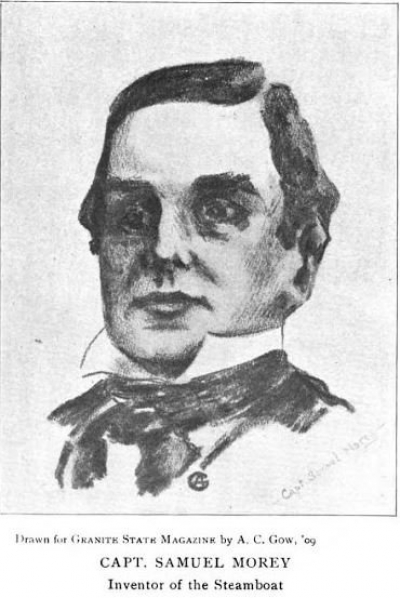An internal combustion engine (ICE or IC engine) is a heat engine in which the combustion of a fuel occurs with an oxidizer (usually air) in a combustion chamber that is an integral part of the working fluid flow circuit. In an internal combustion engine, the expansion of the high-temperature and high-pressure gases produced by combustion applies direct force to some component of the engine. The force is typically applied to pistons (piston engine), turbine blades (gas turbine), a rotor (Wankel engine), or a nozzle (jet engine). This force moves the component over a distance, transforming chemical energy into kinetic energy which is used to propel, move or power whatever the engine is attached to. This replaced the external combustion engine for applications where the weight or size of an engine was more important.The first commercially successful internal combustion engine was created by tienne Lenoir around 1860 and the first modern internal combustion engine was created in 1876 by Nicolaus Otto (see Otto engine).
The term internal combustion engine usually refers to an engine in which combustion is intermittent, such as the more familiar four-stroke and two-stroke piston engines, along with variants, such as the six-stroke piston engine and the Wankel rotary engine. A second class of internal combustion engines use continuous combustion: gas turbines, jet engines and most rocket engines, each of which are internal combustion engines on the same principle as previously described. Firearms are also a form of internal combustion engine, though of a type so specialized that they are commonly treated as a separate category, along with weaponry such as mortars and anti-aircraft cannons.
In contrast, in external combustion engines, such as steam or Stirling engines, energy is delivered to a working fluid not consisting of, mixed with, or contaminated by combustion products. Working fluids for external combustion engines include air, hot water, pressurized water or even liquid sodium, heated in a boiler.
While there are many stationary applications, most ICEs are used in mobile applications and are the primary power supply for vehicles such as cars, aircraft and boats.
ICEs are typically powered by fossil fuels like natural gas or petroleum products such as gasoline, diesel fuel or fuel oil. Renewable fuels like biodiesel are used in compression ignition (CI) engines and bioethanol or ETBE (ethyl tert-butyl ether) produced from bioethanol in spark ignition (SI) engines. As early as 1900 the inventor of the diesel engine, Rudolf Diesel, was using peanut oil to run his engines. Renewable fuels are commonly blended with fossil fuels. Hydrogen, which is rarely used, can be obtained from either fossil fuels or renewable energy.
Samuel Morey (October 23, 1762 – April 17, 1843) was an American inventor, who worked on early internal combustion engines and was a pioneer in steamships who accumulated a total of 20 patents.

1826Apr, 1
Samuel Morey received a patent for a compressionless "Gas or Vapor Engine".
Choose Another Date
Events on 1826
- 1Apr
Internal combustion engine
Samuel Morey received a patent for a compressionless "Gas or Vapor Engine". - 21Jun
Battle of Vergas
Maniots defeat Egyptians under Ibrahim Pasha in the Battle of Vergas. - 11Sep
William Morgan (anti-Mason)
Captain William Morgan, an ex-freemason is arrested in Batavia, New York for debt after declaring that he would publish The Mysteries of Free Masonry, a book against Freemasonry. This sets into motion the events that lead to his mysterious disappearance. - 16Dec
Fredonian Rebellion
Benjamin W. Edwards rides into Mexican-controlled Nacogdoches, Texas, and declares himself ruler of the Republic of Fredonia. - 21Dec
Fredonian Rebellion
American settlers in Nacogdoches, Mexican Texas, declare their independence, starting the Fredonian Rebellion.

 English
English  español
español  français
français  português
português  русский
русский  العربية
العربية  简体中文
简体中文 